News
Firmenich: hibiscus will be the flavour of 2019
4 Jan 2019Firmenich has announced hibiscus as “Flavour of the Year” for 2019 based on the growing appeal of florals in food and drink, and the trend towards curiosity in consumption.

Firmenich has announced hibiscus as “Flavour of the Year” for 2019 based on the growing appeal of florals in food and drink, and the trend towards curiosity in consumption.
“Hibiscus is a beautiful and tasty choice for 2019; it’s natural, floral, and slightly tangy, and we know our customers will be delighted by this selection,” said Emmanuel Butstraen, President of Flavours. “This marks the seventh edition of our Flavour of the Year tradition, eagerly awaited by our customers to inspire them in developing products consumers will love,” he added.According to Firmenich insights, based on data from Mintel and its global consumer database, the worldwide use of hibiscus in food and beverage new product launches has increased nearly 300% compared to 2012. Top categories for launches include yogurt, beer, tea, and chocolates, with most occurring in the U.S., Brazil, Mexico, and Denmark, and showing faster growth in European countries like Spain and Italy.Hibiscus flowers are beautiful. No doubt their “Instagrammable” nature has helped propel them onto the main stage along with their floral friends: lavender, elderflower, rose, and violet. But hibiscus is more than just a pretty flower. As with many popular flavours and ingredients today, hibiscus has numerous health benefits and has been used as a medicinal remedy for centuries. Egyptians used hibiscus tea to lower body temperature and treat heart and nerve diseases. In African countries, the tea was used to treat cold symptoms; and pulp made from the leaves was applied to the skin to heal wounds. Recent studies show promise for both the tea and the hibiscus plant extract to lower blood pressure and cholesterol levels.Direct health benefits of a particular ingredient, as well as the overall trend toward healthier consumption habits are also playing a role in the rise of hibiscus, according to Jeff Schmoyer, VP of Global Consumer Insights at Firmenich. He believes consumer desire for reduced sugar is also a factor. “A correlation we are making to explain the rise in hibiscus is between consumer awareness of sugar content - in particular in their beverages - and their desire to replace sweetness with other flavours that help deliver sensorial impact and provide interesting and novel taste experiences,” he explained. “Flavoured water has become mainstream, with traditional flavours such as lemon, lime and berry having led the way,” he continued. “But now, as people continue to demand healthier beverages, we expect the demand for more niche flavours such as hibiscus that have historical and cultural associations with health to also rise,” he concluded.To date, the most popular use of hibiscus has been in the form of infusions in beverages. However, according to Firmenich, the appeal is much broader. “Hibiscus is more than just a flower extract. It does have a strong floral aroma, with a woody-astringent character, but at the same time there is a subtle and delicate fruity undertone, even a hint of green, like freshly cut mint leaves,” said Fausto Carriles, Senior Firmenich Flavourist in Latin America. “It is very versatile for beverages: it can be consumed cold in summer and also can be a great flavour modifier for winter hot fruit punches. Hibiscus is used all around the world in many cultures, from the simple street beverages up to sophisticated culinary sauces.”In Mexican cuisine, hibiscus has been used in Savoury applications for years, with many traditional ceviche recipes calling for the flavourful flower. Firmenich trend experts found other menu items with hibiscus including enchiladas and dried hibiscus garlic chips. The company is confident that with its sharp and warm nature, product development chefs all over the world will soon be embracing hibiscus in their savoury creations.Consumers continue to seek out new and authentic experiences in this fast-moving digital world. Hibiscus meets the need for consumers’ desire to be connected with new unique experiences, yet not straying too far from their comfort zones. Hibiscus is unusual yet approachable; it is vibrant, yet mellow, cool but not elusive.In fact, this trend of enabling connectivity is also seen in global colour company Pantone’s selection for the Colour of the Year for 2019: Living Coral, which, according to Pantone: embraces us with warmth and nourishment to provide comfort and buoyancy in our continually shifting environment. “We see a lot of mirroring this year between Pantone’s Colour of the Year and our Flavour of the Year,” noted Mikel Cirkus, Global Director of Strategic Foresight. He continued: “This speaks to the increasing interconnectedness of our worlds, and the blurring of boundaries demarcating where trends actually begin.”According to Firmenich, taste patterns are becoming ever-more important predictors of larger societal trends. Food is such a major part our lives, and in today’s world the choices are endless. As Cirkus concluded: “It makes sense that what consumers gravitate towards is a reflection of the world around them, so here is to a beautiful and delicious 2019!”Related news
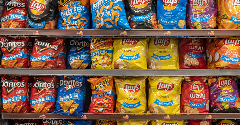
PepsiCo formulates ‘naked’ Cheetos and Doritos products
31 Dec 2025
US food giant PepsiCo has launched its Simply NKD range, a move it says reimagines its popular products with new formulations free from artificial flavours, dyes, and colours.
Read more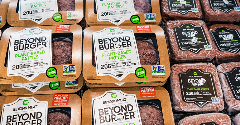
Debate over ban on ‘meaty’ names for plant-based products reaches stalemate
26 Dec 2025
The debate over a ban on plant-based products using “meaty” terms has reached a stalemate, leaving manufacturers in limbo and still facing overhauls to their marketing and packaging.
Read more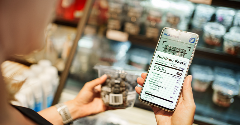
Has ‘clean’ had its day?
22 Dec 2025
Wielding clean-label positioning and fortification as marketing levers is a dangerous strategy, and brands would be better off explaining the hows and whys of the ingredients in their products, say experts.
Read more
Pioneers of circular plastic packaging push for new policies
18 Dec 2025
Some of the world’s largest food and drink companies have grown frustrated at investing in circular packaging systems, as the majority “wait on the sidelines”.
Read more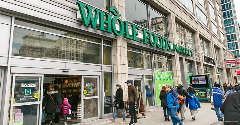
Whole Foods Market forecasts fibre frenzy for 2026
11 Dec 2025
Whole Foods Market has released its top 2026 trends, predicting that a fibre frenzy will take place next year as health-conscious consumers seek out nutritious, filling options.
Read more
Sorghum emerges as better-for-you hero ingredient
9 Dec 2025
With the launch of Novak Djokovic’s sorghum-based brand, the grain’s popularity in the better-for-you snacking sphere is on the rise, thanks to its nutritional and sensory properties.
Read more
Innovation promise in 'maturing' plant-based dairy alternatives market
8 Dec 2025
Plant-based dairy is a maturing market that still faces significant hurdles around taste, functionality, nutrition, and price, but industry is innovating fast, according to experts speaking at Fi Europe.
Read more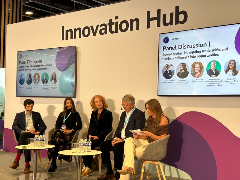
Turning global trade challenges into opportunities
4 Dec 2025
While our food innovation ecosystem is in a healthy place, certain barriers persist. A panel of experts at Fi Europe shared their ideas and strategies for overcoming these, to fully unleash Europe’s potential.
Read more
Celebrating the winners of the Fi Europe Innovation Awards 2025
3 Dec 2025
Food industry stakeholders celebrated as the winners of the Fi Europe Innovation Awards were announced at a ceremony in Paris.
Read more
Yuka’s food scanning app helps consumers make healthier choices
2 Dec 2025
Global food scanning app Yuka helps consumers understand the content of their shopping baskets and shapes producers’ reformulation plans.
Read more
